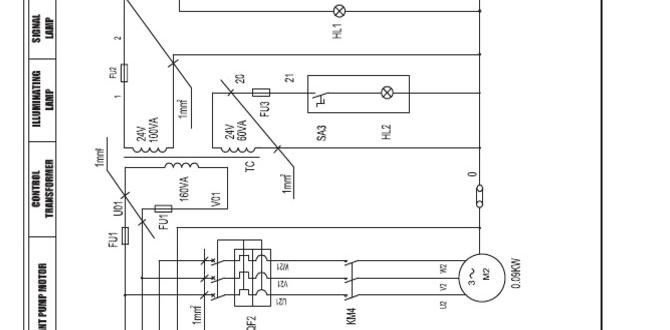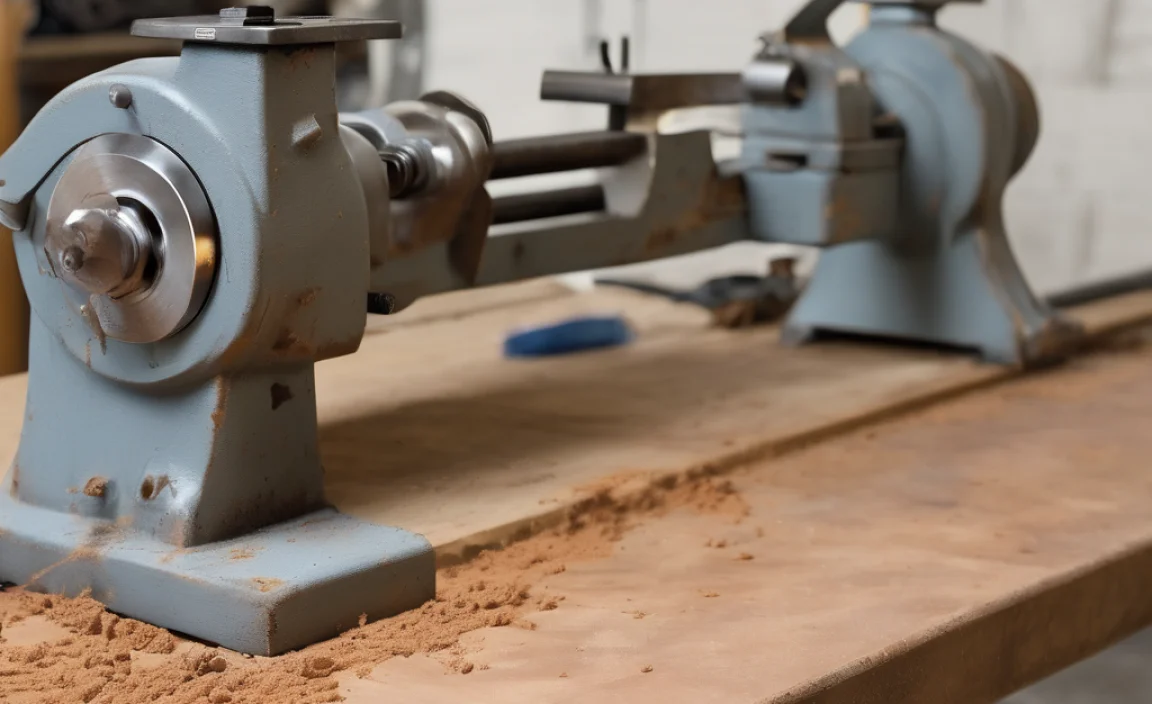Quick Summary: A 1/8 inch carbide end mill, especially one with a 10mm shank for mild steel, is a fantastic tool for achieving high Material Removal Rates (MRR). Choosing the right cutter and settings allows beginners to efficiently machine projects, making work faster and easier.
Unlock High MRR with a 1/8-Inch Carbide End Mill: A Beginner’s Guide
Hey there, makers and machinists! Daniel Bates here from Lathe Hub. Ever feel like your milling projects are taking forever? You’re not alone. One of the biggest frustrations for folks starting out with milling machines is slow progress. It can feel like you’re barely scratching the surface. But what if I told you a small, sharp tool could make a huge difference in how fast you can cut and shape your materials? Today, we’re diving into the world of the 1/8-inch carbide end mill, specifically how it can help you achieve a high Material Removal Rate (MRR), even when working with tough stuff like mild steel. We’ll explore why this tiny tool is a powerhouse and how to use it effectively to speed up your work and get those projects done faster. Get ready to make your milling much more efficient and rewarding!
What is a Carbide End Mill, Anyway?
Before we get into making chips fly, let’s understand what we’re talking about. An end mill is a type of cutting tool used in milling machines. Think of it like a drill bit that can also cut sideways. It spins at high speed and carves away material to create shapes, slots, or pockets.
Now, what makes it “carbide”? Carbide refers to the material the end mill is made from – typically tungsten carbide. This material is incredibly hard, much harder than regular high-speed steel (HSS). This hardness is key. It means carbide end mills can:
- Cut at much higher speeds.
- Last longer, especially in tough materials.
- Withstand higher temperatures generated during cutting.
A 1/8-inch end mill is, simply put, a milling cutter with a diameter of 1/8 of an inch (about 3.175 mm). This small size makes it perfect for detailed work, small pockets, and intricate features. But don’t let its size fool you; when made of carbide, it’s a serious contender for efficient material removal.
Why a 1/8-Inch Carbide End Mill for High MRR?
MRR, or Material Removal Rate, is a measure of how much material you can cut per unit of time. A higher MRR means you’re cutting faster and getting through your work more quickly. So, why is a 1/8-inch carbide end mill so good at this, especially when looking for options like a “carbide end mill 1/8 inch 10mm shank extra long for mild steel high mrr”?
- Carbide Hardness: As mentioned, carbide’s hardness allows for aggressive cutting speeds and feeds.
- Chip Thickness: The geometry of end mills is designed to produce chips of a specific thickness. With the right settings, a small end mill can still generate substantial chips.
- Material Specificity: When designed for materials like mild steel, these end mills often have specialized flute geometries (the spiral grooves) and coatings that help them cut cleanly and efficiently, preventing material from sticking and allowing for faster passes.
- Smaller Diameter Advantage for MRR at Depth: While a larger end mill generally removes more material per pass, a 1/8-inch end mill, especially an “extra long” one, can be used to cut deeper slots or pockets. By taking multiple passes or by having a suitable flute length, it can still achieve a very respectable overall MRR for the intended application without over-stressing lighter-duty machines or workpieces.
- 10mm Shank for Stability: A 10mm shank (compared to a standard 1/8″ or 6mm shank if available) provides increased rigidity. More rigidity means less chatter and deflection, allowing for faster feed rates and deeper cuts without sacrificing accuracy or tool life. This is crucial for maintaining a high MRR.
Think of it like a sharp, agile sports car versus a large truck. The truck can haul more at once, but the sports car can navigate tight turns and accelerate quickly. A 1/8-inch end mill, especially a well-designed carbide one, offers that agility and speed when you need to get into detailed areas or just want to cut through material efficiently.
Key Features to Look For
Not all 1/8-inch carbide end mills are created equal. To get that high MRR performance, especially in materials like mild steel, here’s what to keep an eye out for:
Material and Coating
Tungsten Carbide: This is the gold standard for hardness and heat resistance. Look for solid carbide or carbide-tipped tools.
Coatings: Coatings add an extra layer of performance. For steel, common and effective coatings include:
- AlTiN (Aluminum Titanium Nitride): Excellent for high-temperature applications and steels. It forms a tough, heat-resistant oxide layer.
- TiN (Titanium Nitride): A general-purpose coating that increases hardness and lubricity. Good for a wide range of materials.
- ZrN (Zirconium Nitride): Often called “uncoated” visually but provides a smooth surface that resists chip welding.
For high MRR in steel, AlTiN is usually a top choice due to its ability to handle the heat generated.
Flute Design
The flute is the spiral groove on the end mill. Its design significantly impacts chip evacuation and cutting performance.
- Number of Flutes:
- 2-Flute: Excellent for slotting and chip evacuation. The larger chip gullet (space for chips) allows for more material to be cleared, which is great for increasing feed rates and MRR.
- 4-Flute: Better for finishing and can handle higher speeds and feed rates in some materials when chip evacuation is not an issue. For high MRR in steel, 2-flutes are often preferred due to their superior chip clearing capabilities.
- Helix Angle: A higher helix angle (e.g., 30-45 degrees) helps with smoother cutting and better chip evacuation.
- End Cut Type:
- Square End: The most common type, creates sharp internal corners.
- Corner Radius: Has a rounded internal corner. This adds strength to the tool and the workpiece feature being cut, allowing for more aggressive machining.
Shank and Length
10mm Shank: As mentioned, a 10mm shank offers more rigidity than a smaller shank, reducing vibration and allowing for faster, more aggressive cuts. This is a great feature for stability.
“Extra Long”: An extra-long end mill allows you to reach deeper into workpieces or create deeper pockets and slots in a single setup. However, longer tools are more prone to deflection and vibration. Selecting one with a robust design and using appropriate cutting parameters is key to maintaining accuracy and tool life.
Choosing the Right End Mill for Mild Steel
When you’re specifically targeting high MRR in mild steel with a 1/8-inch end mill, here’s a great combo to aim for:
Recommended Specifications:
- Material: Solid Tungsten Carbide
- Shank Diameter: 10mm
- Diameter: 1/8 inch (3.175 mm)
- Flutes: 2
- Coating: AlTiN or a similar high-temperature coating
- Helix Angle: 30-45 degrees
- End Type: Square or with a small corner radius (e.g., 0.010″ or 0.25mm)
- Length: Consider “short flute” for maximum rigidity or “standard/long flute” if depth is critical, but be prepared for slightly reduced aggressive cutting ability due to deflection. For high MRR, a tool designed for robust cutting at depth on your specific machine is ideal.
A tool like a “1/8-inch 2-flute AlTiN coated carbide end mill with a 10mm shank” is a strong contender for efficient mild steel machining.
Setting Up for Success: Feeds and Speeds
This is where the magic happens! Getting your feed rate (how fast the cutter moves into the material) and spindle speed (how fast the cutter spins) correct is crucial for achieving high MRR safely and effectively.
Understanding Feeds and Speeds (For Beginners)
Spindle Speed (RPM): This is how many times the tool rotates per minute. It’s controlled by your milling machine’s settings.
Feed Rate (IPM or mm/min): This is how fast the workpiece or the cutting tool moves across the material. It’s often expressed in inches per minute (IPM) or millimeters per minute (mm/min).
The combination of these two, along with the tool’s diameter and number of flutes, determines your MRR.
Starting Points for 1/8-Inch Carbide End Mill in Mild Steel
These are general guidelines. Always start conservatively and listen to your machine and the tool. You can find more detailed information on resources like the Machining Data Handbook, but we’ll simplify it here.
For a common configuration (1/8″ carbide, 2-flute, AlTiN coated, 10mm shank):
| Material | Spindle Speed (RPM) – e.g., 20,000 RPM machine | Feed Rate (IPM) – e.g., 0.001″ chip load per flute | Depth of Cut (DOC) | Width of Cut (WOC) |
|---|---|---|---|---|
| Mild Steel | 15,000 – 25,000 RPM | 6 – 12 IPM (approx. 150 – 300 mm/min) | 0.050″ – 0.100″ (1.27 mm – 2.54 mm) | 0.050″ – 0.125″ (1.27 mm – 3.175 mm – usually 50% to 100% of tool diameter) |
Note: Actual RPM depends on your machine’s capabilities and the specific tool’s recommendations. Always check the tool manufacturer’s specs if available. A common approach for high-speed spindles is to reach the upper end of RPM and adjust feed rate.
Explanation of Terms:
- Chip Load: This is the thickness of the chip that each cutting edge of the end mill produces. For a 1/8″ end mill, a good starting chip load is often around 0.001″ to 0.002″ (0.025 mm to 0.05 mm). Multiply this by the number of flutes and the RPM to get your feed rate (e.g., 0.001″ chip load/flute 2 flutes 20,000 RPM = 40 IPM).
- Depth of Cut (DOC): How deep the end mill cuts into the material in the Z-axis per pass. For high MRR, you want to take as deep a cut as your machine and tool can handle without chatter.
- Width of Cut (WOC): How much the end mill cuts sideways into the material in the X or Y axis. For slotting, this is often 100% of the tool diameter (0.125″ for a 1/8″ end mill). For pockets, it might be less.
Tips for High MRR Cutting
- Use a Rigid Machine: A solid, stable milling machine is essential. Small hobby machines might not handle the forces required for aggressive MRR. Ensure your machine’s ways are tight and there’s no excessive play.
- Secure Workholding: Your workpiece must be clamped down VERY securely. Any movement will ruin your cut and is dangerous. Use a vise and consider a vise stop or clamps.
- Use Lubrication/Coolant: For steel, a good cutting fluid or mist coolant is vital. It lubricates the cut, cools the tool and workpiece, and helps clear chips. You can find excellent water-based coolants or even specialized synthetic ones. For home shops, a simple spray of cutting fluid can make a big difference.
- Listen and Observe: The sound of the cut is your best indicator. A smooth, consistent hum is good. Grinding, chattering, or squealing means something is wrong – reduce feed or speed, check your DOC, or ensure good chip evacuation.
- Full Width of Cut is Key: For slotting, try to use the full 1/8″ width of cut if your design allows. This maximizes the material removed per pass.
- Take Multiple Passes if Needed: If your machine or tool isn’t rigid enough for a full-depth cut, take multiple shallower passes. For example, if you need to cut 1/4″ deep, make two passes at 1/8″ each.
- Focus on Chip Evacuation: For a 2-flute end mill, ensure chips are being cleared effectively. If the chips aren’t getting out of the flutes, they’ll recut, causing heat and tool wear. This is where coolant helps a lot.
For more in-depth data, consult resources like Sandvik Coromant’s comprehensive machining data. They provide detailed tables and guidance for various materials and tools.
Step-by-Step: Achieving High MRR with Your 1/8-Inch End Mill
Let’s walk through a typical scenario. You have a piece of mild steel, and you need to mill a slot 1/8 inch wide and 1/4 inch deep. You’ve got your 1/8-inch 2-flute AlTiN coated carbide end mill with a 10mm shank.
- Prepare Your Machine: Ensure your milling machine is clean, lubricated, and in good working order.
- Secure Your Workpiece: Clamp the mild steel firmly in your milling vise or directly to the machine table. Use parallels if necessary to raise the workpiece for easy access.
- Install the End Mill: Insert the 10mm shank end mill into your collet or tool holder. Tighten it securely.
- Set Up Your Program or Manual Controls:
- Spindle Speed: Set your spindle to a suitable RPM, for example, 20,000 RPM.
- Feed Rate: Calculate or set your feed rate based on your machine and desired chip load. For a 0.001″ chip load, 2 flutes, and 20,000 RPM, this is 40 IPM (approx. 1016 mm/min). Start slightly lower, say 30 IPM, if you are unsure.
- Depth of Cut: Since we need to cut 1/4″ deep, and we assume our tool and machine can handle it, we’ll aim for two passes of 1/8″ each.
- Width of Cut: For a 1/8″ slot, the width of cut will be 1/8″ (100% of the tool diameter).
- Apply Coolant: Turn on your coolant system or have your cutting fluid ready to spray.
- Engage the Cut (First Pass):
- Position the end mill above your starting point.
- Begin the spindle rotation.
- Slowly feed the end mill down into the material to the programmed depth of cut (1/8″ or 0.125″). Use the Z-axis handwheel or your CNC controller for this.
- Once at depth, engage the programmed feed rate to mill the slot.
- Allow the machine to complete the pass.
- Retract and Adjust:
- After completing the slot length, retract the end mill out of the workpiece (up in the Z-axis).
- Reposition the end mill to the start of the slot if you were doing a pocket, or just raise








